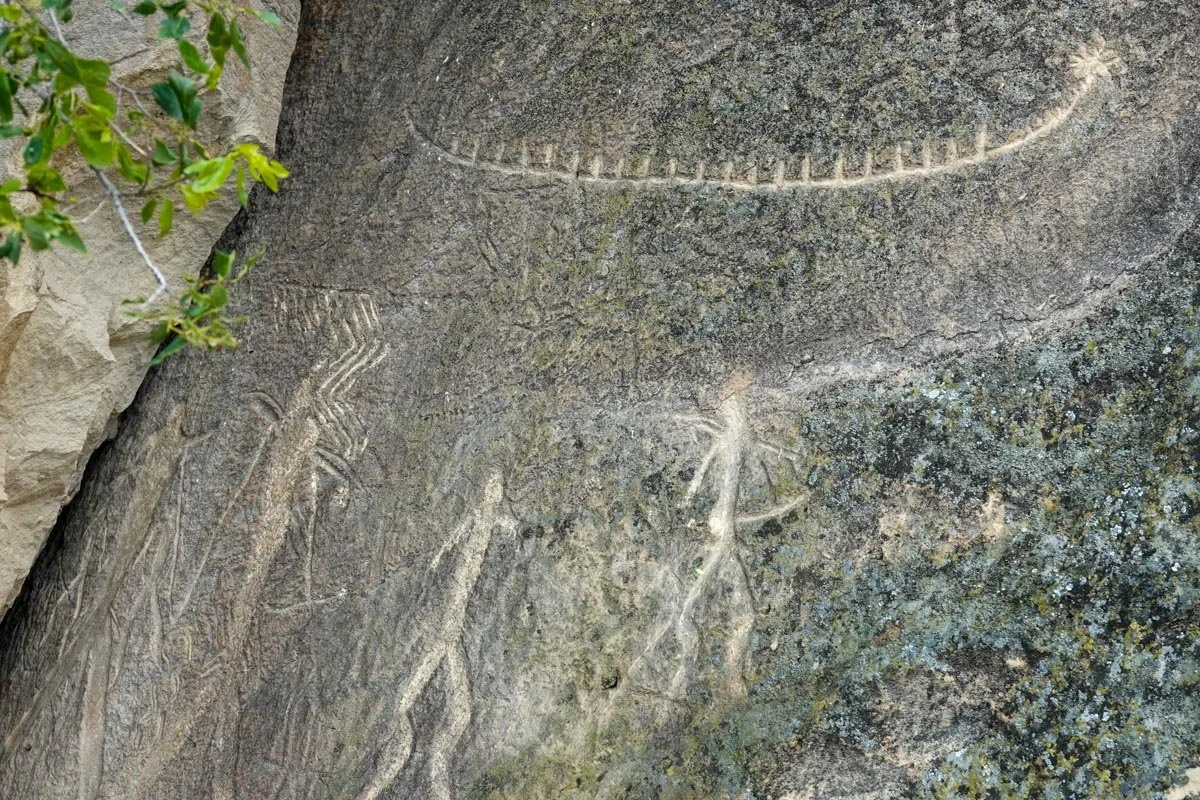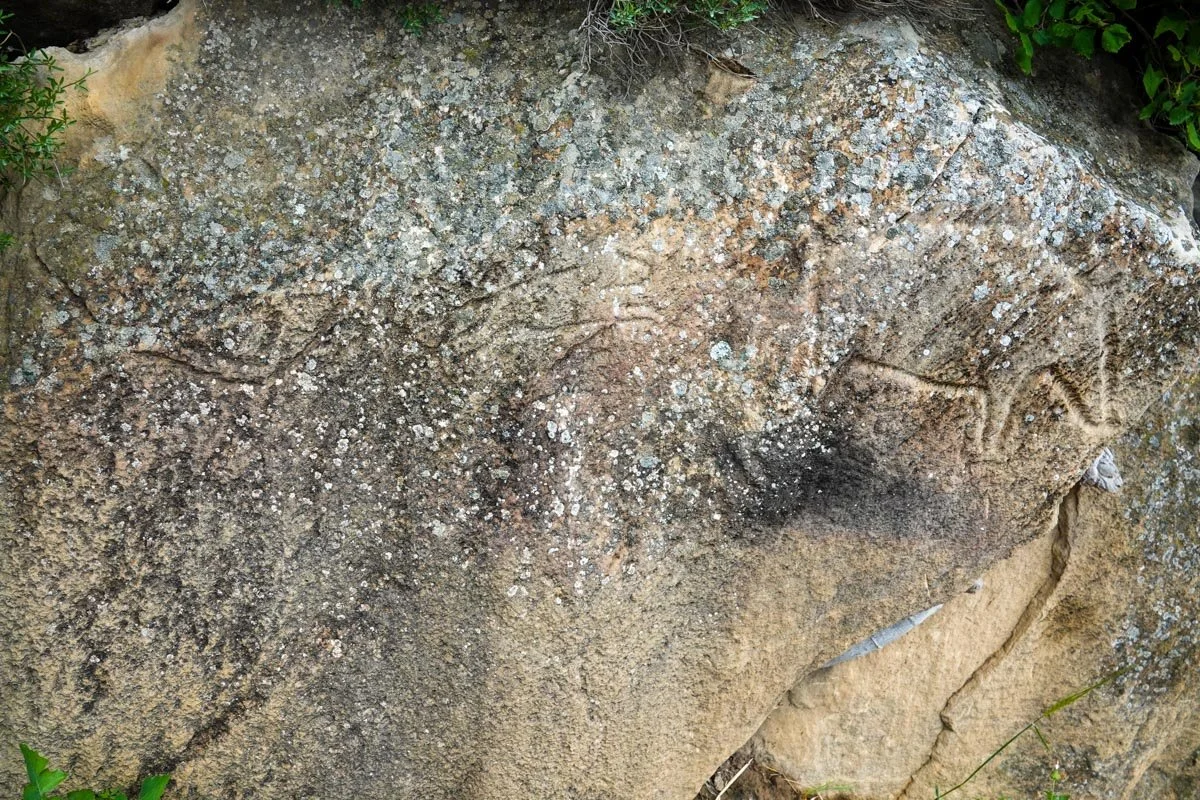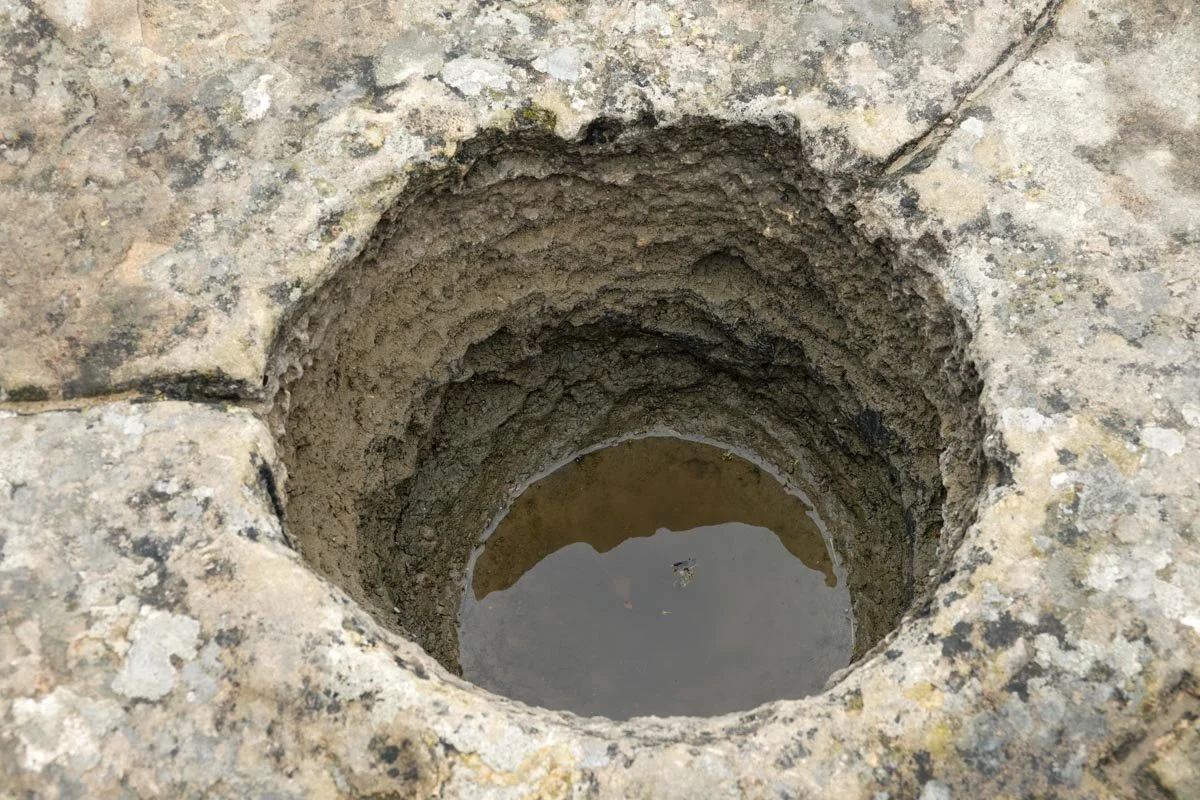Open-Air Museum of Gobustan
We drove southwest from Baku along the Caspian Sea to get to Gobustan and an open-air museum. It's an ancient historic site that contains a large collection of petroglyphs. Petroglyphs are pictures or symbols engraved on a rock surface. The oldest petroglyphs here date from the 12th century BC. The carving fun continued with inscriptions left by Alexander the Great's cohorts in the 4th century BC and then 2,000 year-old graffiti written by the Roman legions.
Thousands of rock engravings are spread over 62 square miles. This site is a UNESCO World Heritage Site. Carvings depict people, animals, hunting scenes, ships, constellations, bullfighting, camel caravans, and celestial symbols such as the sun and stars.
I have to say that I've been to several petroglyph sites in the USA and I often cannot see clearly what a guide tells me I'm looking at. It makes sense, in that after many thousands of years of weather, the rocks erode, stuff grows, and the petroglyphs become less distinct. The same thing happened here at Gobustan, but I'll just show you a few that were much clearer to me than many others.
In the first photo, it wasn't clear that people had lived here for thousands of years but they do have earthquakes in this country.
This first rock has several petroglyphs but the biggest ones appear to be a hunter (on the left) stalking two bulls.
The next one depicts perhaps a story with a boat up top and people down below. Our guide said the boat indicates that they were near water, which this place is. The petroglyphs on the left, the guide suggested were done at a very different time so probably not part of the same story.
The next one appears to be three animals, each one chasing the other. The left one I can't remember, then a leopard, then a boar.
In the next one, you can see a couple of big bulls and one horse. I think more was pointed out but I can't remember it all. There was too much going on in some of the petroglyphs.
I saw many of these holes dug out in the rock and thought they were grinding stones, but our guide said that they were dug out to collect water.






